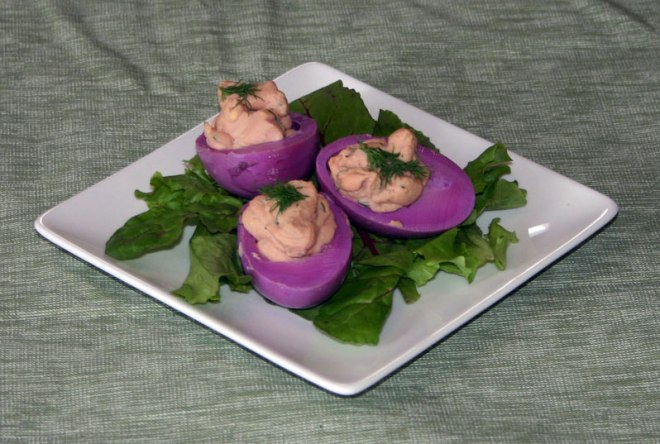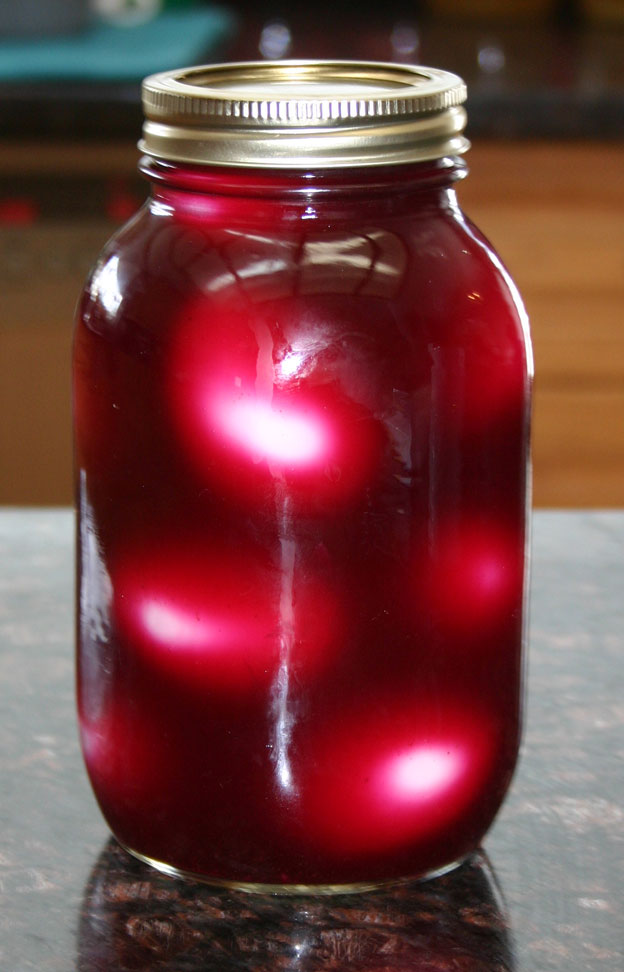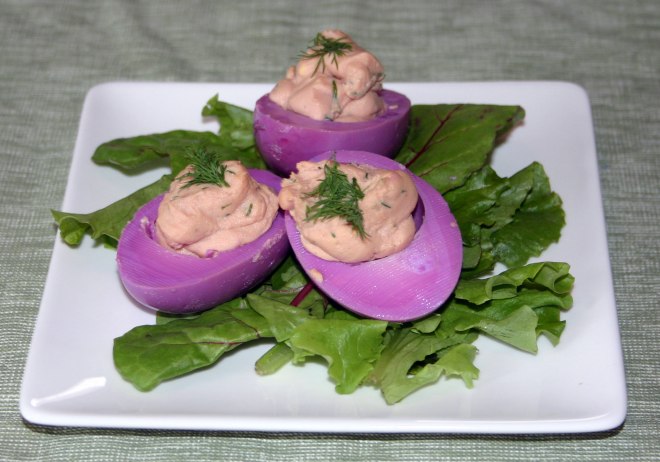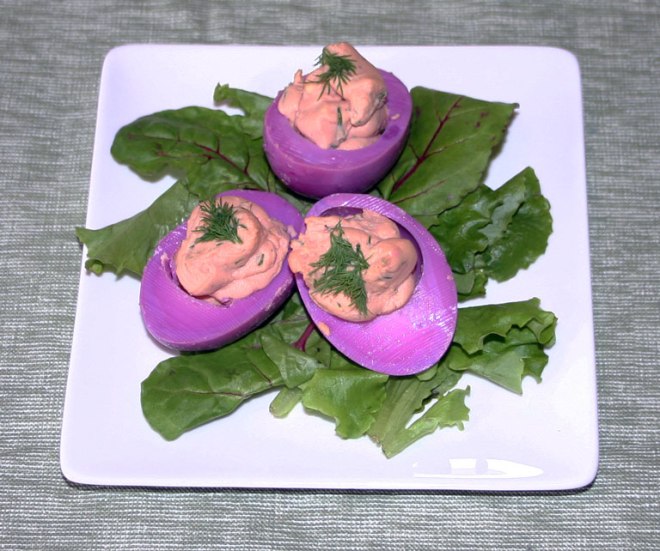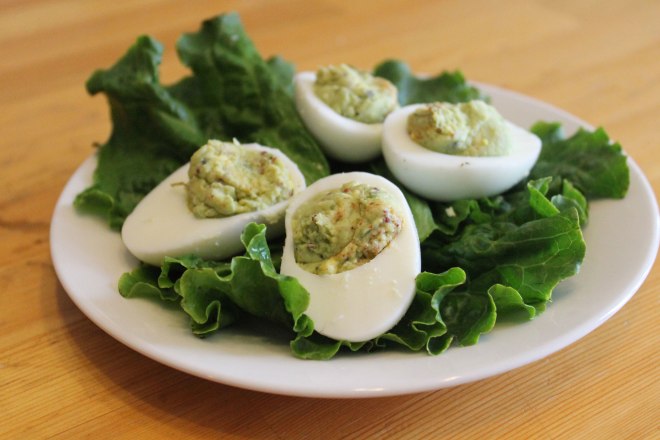This is an unusual way to prepare eggs, but it is both delicious and very striking to look at.
I made these for a Ostara celebration that I attended.
They would also be perfect for Easter, and would make a stunning addition to a brunch table. I also made some yellow deviled eggs as well, but they are a separate recipe.
They also make great appetizers or snacks. Kids love them due to the unusual colour…
The striking pink-purple colour is 100% natural, and comes from soaking the cooked and peeled eggs in leftover beet-brine or beet kvass.
The eggs need to soak in the brine for several days – the longer you soak them, the more the whites take on the colour – I left these in the brine for 7 days, and as you can see, the purple-pink colour penetrated all the way to the yolks. In fact, the yolks were stained slightly pink at the edges. I suspect that leaving them in the brine for even longer would result in pink yolks as well.
If you also need to make the beet brine or kvass, you will need to start these at least 2 weeks in advance. The recipe for the beet brine/kvass can be found here.
While these are not 100% AIP (egg yolks are a stage 1 reintroduction, and egg whites are a stage 2 reintroduction), if you have successfully managed to reintroduce eggs, you could enjoy these beauties. When reintroducing foods on the AIP, I recommend this guide.
Pink Deviled Eggs
makes 2 dozen halved eggs
- 1 dozen eggs
- beet brine or beet kvass to cover
- ¼ cup homemade mayonnaise
- ¼ cup coconut milk yoghurt
- 2 tbsp fresh dill – chopped
- salt and black pepper to taste (black pepper is a stage 2 reintroduction – omit this if sensitive to it)
- dill sprigs to garnish
Place the eggs in a pan and cover with cold water. Bring to the boil, then simmer for 10 minutes.
Drain the eggs and cover in cold water. Leave to stand until completely cold.
Remove the shells from the eggs, and place them in a large mason jar. Cover the eggs with the beet brine/beet kvass, and put on a lid.
Store the eggs in the fridge for between 3 and 7 days. The longer you leave the eggs, the more colour the whites will take.
To make the deviled eggs, drain off the beet brine/kvass.
Slice each egg in half, lengthwise and scoop the yolks into a bowl.
Mash the yolks with the mayonnaise and coconut milk yoghurt until smooth. Season with salt and black pepper, and stir in the dill.
Spoon or pipe the yolk mixture back into the whites and garnish with a small sprig of dill.
Keep in the fridge until you are ready to serve, and be prepared to explain to everyone how you achieved that wonderful colour!
Shared at Mostly Homemade Monday
Shared at Fat Tuesday
Shared at Tuesdays With a Twist
Shared at Corn Free Everyday
Shared at Handmade Tuesday
Shared at Simple Life Sunday
Shared at Show and Share
Shared at The Art of Homemaking Mondays
Shared at Wildcrafting Wednesday
Shared at Homestead Blog Hop
Shared at Full Plate Thursday
Shared at Home & Garden Thursday
Shared at All Things Thursday
Shared at Awesome Life Friday
Shared at Simply Natural Saturday
